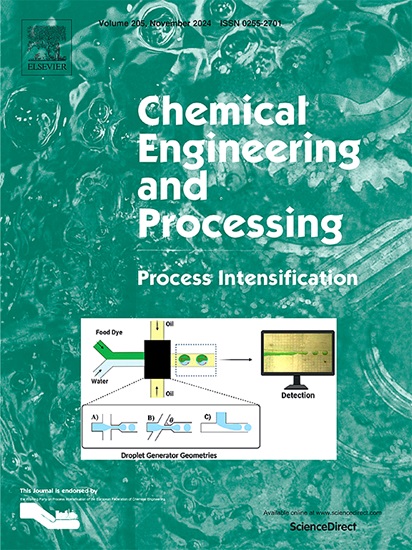Bio-nano hybrid material for mitigating recalcitrant phenolic compounds
IF 3.8
3区 工程技术
Q3 ENERGY & FUELS
Chemical Engineering and Processing - Process Intensification
Pub Date : 2025-02-01
DOI:10.1016/j.cep.2024.110121
引用次数: 0
Abstract
The widespread use of phenolic compounds raises concerns regarding their potential damage to human health and the environment. Therefore, developing cost-effective and efficient methods for removing these hazardous pollutants from contaminated aquatic environments becomes essential. Herein, we report on the successful development of a bio-nano hybrid material based on polyacrylonitrile nanofibrous membrane (PAN NMF) combined with Trametes versicolor FC for the removal of phenolic recalcitrant compounds from aqueous media. Specifically, Trametes versicolor FC was immobilized on PAN NMF (PAN@TV NMF) produced by electrospinning. The biohybrid material could efficiently degrade bisphenol A (BPA), tetracycline (TC), methylene blue (MB), and methyl orange (MO), suggesting a synergistic removal by simultaneous adsorption and biotransformation processes. Among all pollutants assayed, TV and PAN@TV NMF removed BPA more easily and efficiently, with removal rates above 50 % after 72 hours. Furthermore, the biotransformation pathways were investigated, and the chemical structures of the fungal metabolites were proposed according to their high-resolution mass data. BPA, MB, and MO underwent biotransformation into simpler, easily biodegradable compounds with potentially lower toxicity. Our findings provide new insights into removing hazardous phenolic compounds from water sources by immobilizing fungi on nanofiber membranes, highlighting their potential applications in wastewater treatment and pollutant remediation.

求助全文
约1分钟内获得全文
求助全文
来源期刊
CiteScore
7.80
自引率
9.30%
发文量
408
审稿时长
49 days
期刊介绍:
Chemical Engineering and Processing: Process Intensification is intended for practicing researchers in industry and academia, working in the field of Process Engineering and related to the subject of Process Intensification.Articles published in the Journal demonstrate how novel discoveries, developments and theories in the field of Process Engineering and in particular Process Intensification may be used for analysis and design of innovative equipment and processing methods with substantially improved sustainability, efficiency and environmental performance.

 求助内容:
求助内容: 应助结果提醒方式:
应助结果提醒方式:


